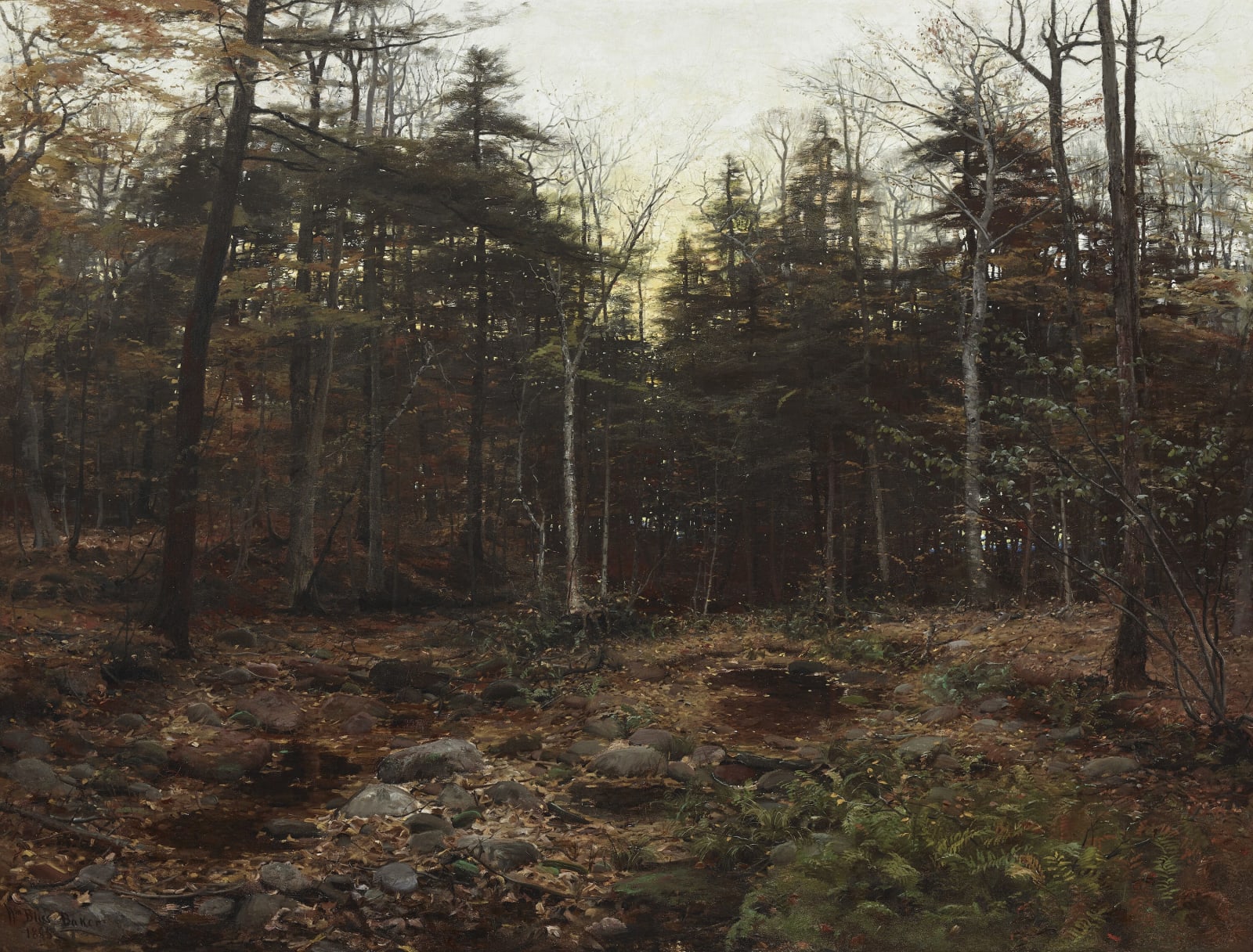William Bliss Baker 1859-1886
96.5 x 127 cm
Framed dimensions: 49 3/8 x 61 3/8 inches
William Bliss Baker was born in New York City in 1859 and was raised upstate in the village of Ballston Springs. Baker’s early penchant for painting steered him to enroll in classes at the National Academy of Design when he was only seventeen years old. His passion and ambition were not without warrant: The National Academy awarded Baker’s skill in 1879 with the Elliot prize for drawing, and again in 1885 when he was the recipient of one of the prestigious Julius Hallgarten prizes.
The Salmagundi Sketch Club invited Baker to exhibit his works beginning in 1881 at The Black and White Exhibitions, and the artist continued to do so for the next five years, with the exception of 1885.[1] Justified by the strict acceptance of works done only in black and white, these exhibitions provided the opportunity for Baker’s works to hang alongside the likes of William Merritt Chase, Winslow Homer, the Moran brothers, John Singer Sargent, and James M. Whistler, to name a few.
The rapid progression of his success can be credited to his sensational landscapes: “He possessed, in an eminent degree, the very uncommon ability to elaborate detail and to render minute and subtle effects with close finish, while yet preserving in his pictures the breadth and dignity of the largest facts.”[2] In 1886, Baker’s career tragically ended just as he was reaching the pinnacle of his success. At the young age of twenty-seven, Baker succumbed to health complications stemming from a reported skating accident that occurred while visiting his artist studio in New York.
After his death, one hundred and thirty of Baker’s paintings were put up for auction, and the sale brought in almost $15,000. Critics considered this amount quite a feat, given Baker’s youth and that he was a fully American-trained artist.
[1] Alexander W. Katlan, The Black and White Exhibitions of the Salmagundi Sketch Club 1878 to 1887 (New York 2007): 49.
[2] Catalogue of the Private Art Collection of Thomas B. Clarke (New York: American Art Association, 1899), 18.
[3] “Selling Works of Art: Pictures of Baker, Sprague’s Collection, and the Baker Statues” in The New York Times (18 March 1887): 5.
Although William Bliss Baker showed extraordinary promise as a young artist, he is relatively unknown today, since he died tragically from a skating accident when he was only twenty-six. Woodland Scene was completed in 1885, when the artist was only twenty-six years old, and it clearly demonstrates Baker’s prodigious talent. In this work, Baker combined a rich painterly approach with areas of detail to create an almost photographic level of realism.
The Value
Paintings by William Bliss Baker are extremely rare, since the artist died tragically at such a young age. The rarity of his work is matched only by its exceptional quality and beauty. Had he lived, there is no question that Baker would have become one of the great American landscape painters of the nineteenth century. We have been looking for examples of his paintings for twenty-five years, and this work is extraordinary in its execution. It stands up to any of the titans of the Hudson River School, making its value all the more attractive to both seasoned and new collectors.
Provenance
Albert E Cluett to his wife, Caroline Ide Cluett;By descent to their son, Albert E Cluett Jr;
By descent to his brother, Edmund Cluett;
By descent to his son, Albert E Cluett III
Please join our mailing list
* denotes required fields
We will process the personal data you have supplied in accordance with our privacy policy (available on request). You can unsubscribe or change your preferences at any time by clicking the link in our emails.



